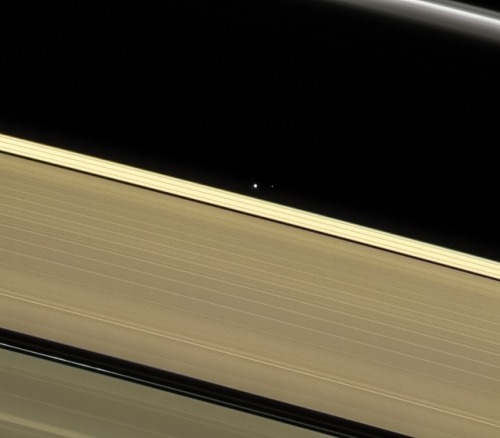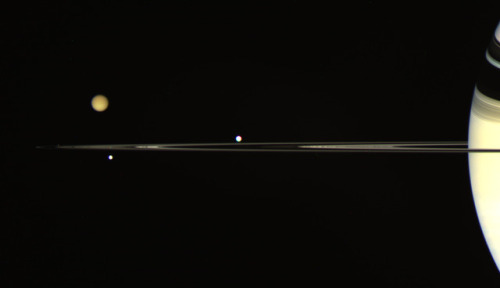In Honor Of The First Frost Of The Year, I Propose A New Winter Cryptid: The Snow Crow.
In honor of the first frost of the year, I propose a new winter cryptid: the Snow Crow.
Who sparks those ice crystals along rooftops and cars? If they’re in a good spot for sledding, it might just be a Snow Crow.

More Posts from Starry-shores and Others
What are brown dwarfs?
In order to understand what is a brown dwarf, we need to understand the difference between a star and a planet. It is not easy to tell a star from a planet when you look up at the night sky with your eyes. However, the two kinds of objects look very different to an astronomer using a telescope or spectroscope. Planets shine by reflected light; stars shine by producing their own light. So what makes some objects shine by themselves and other objects only reflect the light of some other body? That is the important difference to understand – and it will allow us to understand brown dwarfs as well.

As a star forms from a cloud of contracting gas, the temperature in its center becomes so large that hydrogen begins to fuse into helium – releasing an enormous amount of energy which causes the star to begin shining under its own power. A planet forms from small particles of dust left over from the formation of a star. These particles collide and stick together. There is never enough temperature to cause particles to fuse and release energy. In other words, a planet is not hot enough or heavy enough to produce its own light.

Brown dwarfs are objects which have a size between that of a giant planet like Jupiter and that of a small star. In fact, most astronomers would classify any object with between 13 times the mass of Jupiter and 75 times the mass of Jupiter to be a brown dwarf. Given that range of masses, the object would not have been able to sustain the fusion of hydrogen like a regular star; thus, many scientists have dubbed brown dwarfs as “failed stars”.

A Trio of Brown Dwarfs
This artist’s conception illustrates what brown dwarfs of different types might look like to a hypothetical interstellar traveler who has flown a spaceship to each one. Brown dwarfs are like stars, but they aren’t massive enough to fuse atoms steadily and shine with starlight – as our sun does so well.

On the left is an L dwarf, in the middle is a T dwarf, and on the right is a Y dwarf. The objects are progressively cooler in atmospheric temperatures as you move from left to right. Y dwarfs are the newest and coldest class of brown dwarfs and were discovered by NASA’s Wide-field Infrared Survey Explorer, or WISE. WISE was able to detect these Y dwarfs for the first time because it surveyed the entire sky deeply at the infrared wavelengths at which these bodies emit most of their light. The L dwarf is seen as a dim red orb to the eye. The T dwarf is even fainter and appears with a darker reddish, or magenta, hue. The Y dwarf is dimmer still. Because astronomers have not yet detected Y dwarfs at the visible wavelengths we see with our eyes, the choice of a purple hue is done mainly for artistic reasons. The Y dwarf is also illustrated as reflecting a faint amount of visible starlight from interstellar space.
In this rendering, the traveler’s spaceship is the same distance from each object. This illustrates an unusual property of brown dwarfs – that they all have the same dimensions, roughly the size of the planet Jupiter, regardless of their mass. This mass disparity can be as large as fifteen times or more when comparing an L to a Y dwarf, despite the fact that both objects have the same radius. The three brown dwarfs also have very different atmospheric temperatures. A typical L dwarf has a temperature of 2,600 degrees Fahrenheit (1,400 degrees Celsius). A typical T dwarf has a temperature of 1,700 degrees Fahrenheit (900 degrees Celsius). The coldest Y dwarf so far identified by WISE has a temperature of less than about 80 degrees Fahrenheit (25 degrees Celsius).
Sources: starchild.gsfc.nasa.gov & nasa.gov
image credit: NASA / JPL-Caltech

Hubble Spots Flock of Cosmic Ducks by NASA Goddard Photo and Video

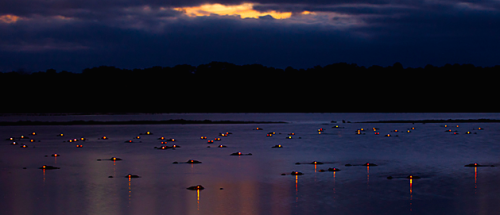


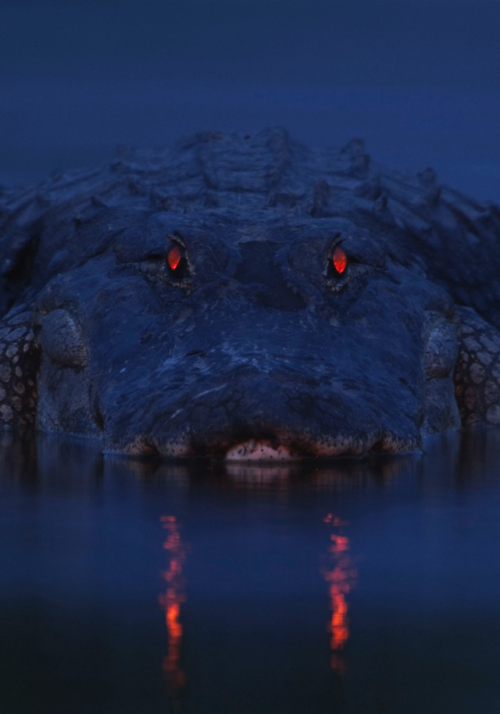
the red eyeshine of the alligator occurs when light enters its eyes, passes through the rods (light receptors) and cones (color receptors) of the retina, strikes a membrane behind the retina called a tapeatum, and is then reflected back through the eye to the light source. most of the animals with eyeshine are, like alligators, night hunters who must make use of limited light. photos by larry lynch and david moynahan
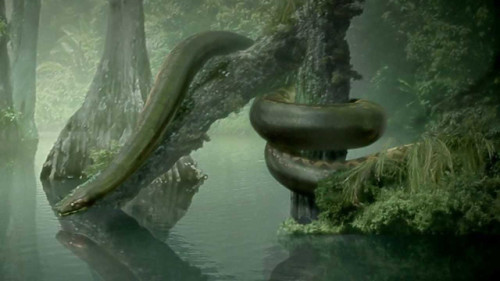

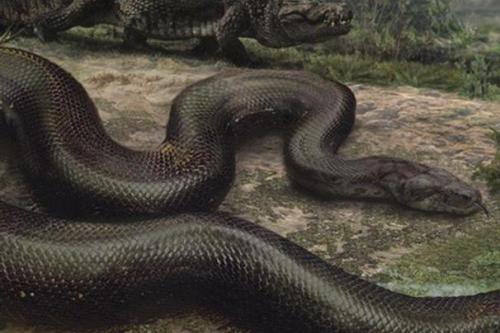
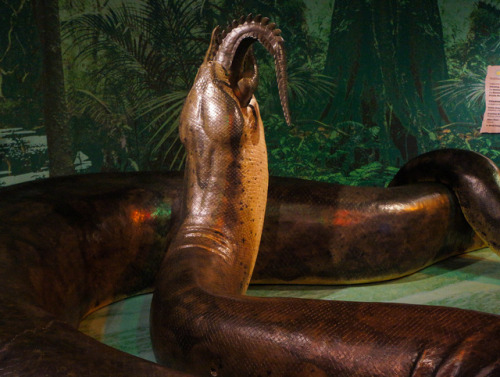
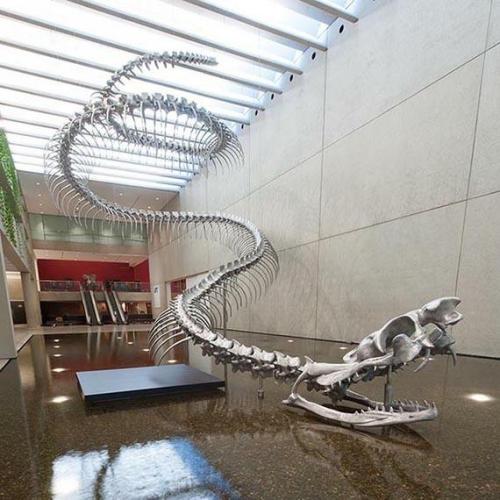

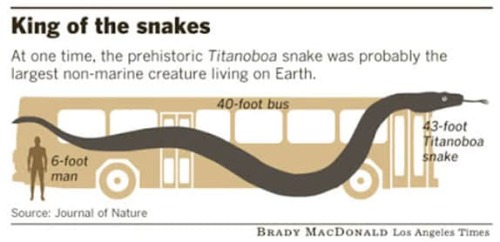
Titanoboa
Titanoboa is an extinct genus of snakes that is known to have lived in present-day La Guajira in northern Colombia. The giant snake lived during the Middle to Late Paleocene epoch, a 10-million-year period immediately following the Cretaceous-Paleogene extinction event.
The only known species is Titanoboa cerrejonensis, the largest snake ever discovered. By comparing the sizes and shapes of its fossilized vertebrae to those of extant snakes, researchers estimated that the largest individuals of T. cerrejonensis found had a total length around 42 feet and weighed about 2,500 pounds.
While initially thought to have been an apex predator of the Paleocene ecosystem in which it lived, evidence has pointed to the genus being predominantly piscivorous. Titanoboa’s massive size would have made it difficult to move on land, so the giant snake would probably have spent most of its life in the water, hunting for fish and other aquatic prey.
WHY THE TRIASSIC????
What the FUCK is so WEIRD about the Triassic?
Well I will TELL YOU!
Okay so first of all, the Triassic is SUPER DUPER OLD. In the grand scheme of the Earth, sure, it happened relatively recently, but working on the scale of the entire geologic time span of the Earth’s existence is not exactly fair:

I mean, animals that we can recognize today didn’t show up until that line in the Phanerozoic (Hadean is the oldest stuff), so like, it’s smack dab in the middle of THAT
Look, basically, here’s what happened:
- The earth Formed. Life Appeared. Chaos reigned (4,600 million years ago until 4,000 million years ago)
- Life began to become more complex. Some life began to stick its blueprints inside of pockets so they’d be safer. They then swallowed other life forms that were better at getting energy, but kept them around like a buddy inside of them. Some of these guys could make a shitton of oxygen. This made the earth cool and a lot of shit die out super duper quickly. Extinction rate unknown. (4,000 million years ago until 2,500 million years ago)
- Climate change and fluctuating oceans allow life to start to group up together into SuperLife aka Multicellular Things. These multicellular things got more and more complicated. Some became animals and started moving around a lot. Some plants went on land. Some things were super weird looking and mysterious. LOTS of experimentation by life. Things start to change and a lot of these early experiments go extinct. Extinction rate unknown. (2,500 million years ago until 541 million years ago)
- Animals can suddenly burrow underground and go absolutely apeshit and diversify faster than you can say “wait a second whAT THE FUCK IS THAT”. Ice Age causes Death, 85% of species die out. (541-444 million years ago)
- Fish suddenly have a chance to be weird too and some of them decide, what the heck, let’s crawl onto land. Why not, right? Some other animals decide to join them. Plants make everything super cold, 75% of all species die out. (444-359 mya)
- Land-vertebrates start to diversify. They try out a lot of new things, but there aren’t a lot of them yet. So there’s still a lot of experimentation in body plans. Mammal-relatives are actually some of the most diverse ones. Reptiles are fairly rare. A GIANT MASS EXTINCTION CAUSED BY A GIANT LAVA FIELD EXPLODING KILLS ~95% OF LIFE ON EARTH. (359-252 mya)
- NEW animals get to try to diversify and do lots of crazy shit in the wake of SO MANY JOBS IN THE ENVIRONMENT GETTING CLEARED OUT. Reptiles diversify so fast you don’t know what the heck is happening. Other animals also take this opportunity to do new and weird shit. VOLCANOS EXPLODE, KILL ~80% OF LIFE (252-201 mya)
- Dinosaurs finally get to do fun things now that other reptiles are no longer being weird. Modern life starts to show up. (201 mya-today).

BASICALLY:
- Land Animals had only just started to diversify and try out new funky things with their bodies in order to cope with the challenges of terrestrial life
- Then a giant mass extinction killed everything. Mass exinctions are bad news for a lot of shit that’s specialized for the environment that’s been destroyed, BUT it allows things that make it through to have a chance to try out new shit to fill all those empty jobs in the environment
- So, generalist reptiles, who hadn’t had a chance to do jack diddly squat before, now suddenly had the whole planet to play with. And the other animals around them, from mammal-cousins to amphibians to fish to insects to other invertebrates, also got to try out some new stuff in this new world
- AND THEN ANOTHER MASS EXTINCTION HAPPENED RIGHT AFTER THAT RESET THE CLOCK AGAIN
This means that the TRIASSIC has some of THE MOST UNIQUE ANIMALS TO HAVE EVER EVOLVED IN EARTH’S HISTORY. Experiments were tried, rapidly, and MANY were lost RIGHT AWAY. It’s not like the life that evolved after that, which was honestly similar to what we see today - or those that evolved after the end-Cretaceous extinction, which was even more like today. These were weirdos that appeared and were wiped out before they could continue on to today
And, because this was a rapid evolutionary period, we see the starts of many of today’s modern groups of animals, and they’re super weird, too!
Honestly, the only weirder period in Earth’s history is the Cambrian Explosion, when animals first started doing anything notable at all

On top of THAT, the ENTIRE EARTH was ONE GIANT SUPERCONTINENT called Pangea! Everyone could go everywhere! There were no terrestrial barriers to movement! So many creatures spread all over the globe. It was a HOTSPOT of biodiversity and a major turning point in Earth’s History
But, because the dinosaurs that evolved in the Triassic were kind of Meh, it doesn’t get enough press!!!!!!!!!!!!!
So, we’re going to cover the Weird and Wonderful animals of the Triassic - we have a carefully curated list of Weirdos ready to take Tumblr by storm, and we hope you’ll enjoy learning about these amazing animals right along with us! You’ll have to wait till tomorrow to see them, though - don’t want to give away the surprises!
GET! PUMPED!

IT’S TRIASSIC TIME!
-
 red-white-but-not-blue reblogged this · 2 weeks ago
red-white-but-not-blue reblogged this · 2 weeks ago -
 red-white-but-not-blue liked this · 2 weeks ago
red-white-but-not-blue liked this · 2 weeks ago -
 c0rvus-c0rax liked this · 6 months ago
c0rvus-c0rax liked this · 6 months ago -
 korennu reblogged this · 2 years ago
korennu reblogged this · 2 years ago -
 randomwizard21 liked this · 3 years ago
randomwizard21 liked this · 3 years ago -
 flowersandfungi liked this · 3 years ago
flowersandfungi liked this · 3 years ago -
 honey-nut-queerio liked this · 3 years ago
honey-nut-queerio liked this · 3 years ago -
 torhallatalaksdater reblogged this · 3 years ago
torhallatalaksdater reblogged this · 3 years ago -
 73anthrax liked this · 3 years ago
73anthrax liked this · 3 years ago -
 nightbird-1 reblogged this · 3 years ago
nightbird-1 reblogged this · 3 years ago -
 nightbird-1 liked this · 3 years ago
nightbird-1 liked this · 3 years ago -
 superredvelvetcupcakesworld liked this · 3 years ago
superredvelvetcupcakesworld liked this · 3 years ago -
 starry-shores reblogged this · 3 years ago
starry-shores reblogged this · 3 years ago -
 an-abyss-called-life liked this · 3 years ago
an-abyss-called-life liked this · 3 years ago -
 inexpressiblybeautiful liked this · 3 years ago
inexpressiblybeautiful liked this · 3 years ago -
 twinyards227 reblogged this · 3 years ago
twinyards227 reblogged this · 3 years ago -
 twinyards227 liked this · 3 years ago
twinyards227 liked this · 3 years ago -
 hurricanescrambles liked this · 4 years ago
hurricanescrambles liked this · 4 years ago -
 linkedswords reblogged this · 4 years ago
linkedswords reblogged this · 4 years ago -
 curious-sootball liked this · 4 years ago
curious-sootball liked this · 4 years ago -
 everythingisahoax reblogged this · 4 years ago
everythingisahoax reblogged this · 4 years ago -
 zahar-ars liked this · 4 years ago
zahar-ars liked this · 4 years ago -
 betelgeuse-is-the-best-star reblogged this · 4 years ago
betelgeuse-is-the-best-star reblogged this · 4 years ago -
 betelgeuse-is-the-best-star liked this · 4 years ago
betelgeuse-is-the-best-star liked this · 4 years ago -
 mr-mango-tango liked this · 4 years ago
mr-mango-tango liked this · 4 years ago -
 the-edgy-enby-shitposter liked this · 4 years ago
the-edgy-enby-shitposter liked this · 4 years ago -
 that1randomname liked this · 4 years ago
that1randomname liked this · 4 years ago -
 maybeitsbassoon reblogged this · 4 years ago
maybeitsbassoon reblogged this · 4 years ago -
 maybeitsbassoon liked this · 4 years ago
maybeitsbassoon liked this · 4 years ago -
 jazzapples3 reblogged this · 4 years ago
jazzapples3 reblogged this · 4 years ago -
 jazzapples3 liked this · 4 years ago
jazzapples3 liked this · 4 years ago -
 itsjustalittlevampire reblogged this · 4 years ago
itsjustalittlevampire reblogged this · 4 years ago -
 itsjustalittlevampire liked this · 4 years ago
itsjustalittlevampire liked this · 4 years ago -
 kit-is-so-fine reblogged this · 4 years ago
kit-is-so-fine reblogged this · 4 years ago -
 kit-is-so-fine liked this · 4 years ago
kit-is-so-fine liked this · 4 years ago -
 uupiic reblogged this · 4 years ago
uupiic reblogged this · 4 years ago -
 naucaruni reblogged this · 4 years ago
naucaruni reblogged this · 4 years ago -
 naucaruni liked this · 4 years ago
naucaruni liked this · 4 years ago -
 thefangirloutof-time liked this · 4 years ago
thefangirloutof-time liked this · 4 years ago -
 louhetar reblogged this · 4 years ago
louhetar reblogged this · 4 years ago -
 vampdr3w reblogged this · 4 years ago
vampdr3w reblogged this · 4 years ago -
 vampdr3w liked this · 4 years ago
vampdr3w liked this · 4 years ago -
 raintailed liked this · 4 years ago
raintailed liked this · 4 years ago -
 mcpesto liked this · 4 years ago
mcpesto liked this · 4 years ago

Amateur astronomer, owns a telescope. This is a side blog to satiate my science-y cravings! I haven't yet mustered the courage to put up my personal astro-stuff here. Main blog : @an-abyss-called-life
212 posts
